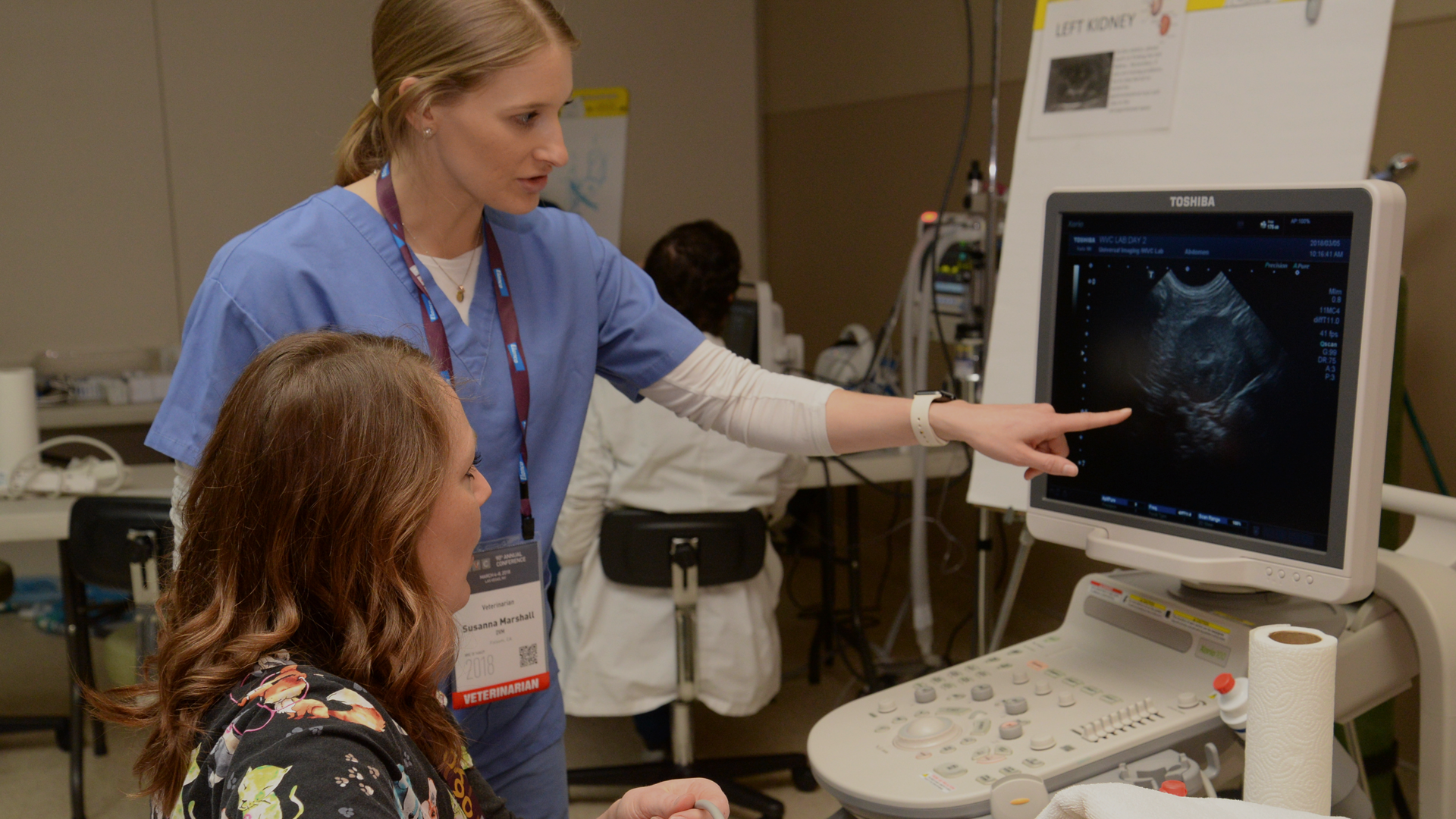Viticus Veterinary Summit: Can't Miss CE
Viticus Group is excited to launch the Viticus Veterinary Summit, an opportunity for veterinary professional to dive into an interactive virtual...
2 min read
Abby Crimm : March 5, 2020 11:00:00 AM PST

Going to hands-on labs and practical CE events as a veterinary technician brings empowerment, pride, and better care.
Passionate, happy, and trained veterinary technicians make the veterinary world go round. Veterinarians and veterinary team members alike will tell you that the efficiency, standard of care, culture, and knowledge of a clinic’s technicians greatly determine the quality and success of that clinic.
Tasha McNerney is the founder of the Veterinary Anesthesia Nerds, a Facebook group of over 43,000 people who love, love, love pain management. A registered veterinary technician and community leader herself, Tasha discusses in her Quick Cup of Knowledge interview the value of educational opportunities that combine lecture and hands-on elements.
(If you’d like to hear Tasha’s tips for raising standards, career building, and burnout, check out the post from her first Quick Cup of Knowledge.)
At events like the WVC Veterinary Technician Symposium and the Veterinary Anesthesia Nerds Symposium, the education is designed by and for veterinary technicians. They know the challenges and opportunities veterinary technicians face every day, allowing them to create labs that help technicians elevate their care in a practical and empowering way.
As veterinary technicians across the country feel they are being underutilized in their practice and want to do more, going to get hands-on CE shows a passion and skill level that can be applied immediately. More utilization can ultimately lead to higher job satisfaction and pride, as technician teams make their practices more efficient and raise the quality of care.
The advantages of CE with a wet lab component doesn’t stop at hands-on practice with new procedures or techniques. Getting comfortable and familiar with new equipment is another reason to invest.
Exposing yourself to new equipment and technology not only increases your utilization and value to the team but also improves the patient care and marketability of a veterinary practice whose equipment is up-to-date, efficient, and accurate.
For these reasons, Tasha and her colleagues make a “Top 10” list of tools and resources they love and wouldn’t do without. She gives us a sneak peek at a couple of items on the top 10 list for this year:
The first thing Tasha mentioned was the Sentier Vetcorder, a device that allows anesthesia/analgesia specialists to monitor patients continuously while performing other tasks. Another inclusion of the top 10 list is a new textbook called Veterinary Anesthetic and Monitoring Equipment. Knowing the ins and outs of the equipment and being able to troubleshoot is supremely useful for quick solutions to would-be big problems.
When there’s new equipment you’d like to see implemented at your practice, but you have no say in the matter, a friendly and informed conversation with the person who makes the financial decisions is a great way to go. Equipment may be expensive, however, and some practices are hesitant about spending a lot of money on something that may not provide much of a return.
Tasha shares a great tip about how to convince an apprehensive decision-maker at your practice to invest in new equipment you believe the practice needs—bring in a test!
She says most equipment companies or manufacturers will let you bring in a sample of their equipment for a limited amount of time. Once the practice leaders see the utility and value of the equipment, they’ll be more open to purchasing it (tricky, tricky).
Even if the boss remains unmoved, chances are members of your team will find the tool to be worth the investment. Support from your peers will add to the persuasiveness of your argument and increase your chances of success.
Enroll now in one of the most popular WVC Academy events made by veterinary technicians, for veterinary technicians. Check out the Veterinary Technician Symposium here.
Subscribe to our YouTube channel or check out our Resource Library full of great podcasts, videos, and digital downloads!
Disclaimer
Content may contain advertising and sponsorships. Advertisers and sponsors are responsible for ensuring that material submitted for inclusion is accurate and complies with applicable laws. We are not responsible for the illegality of any error, inaccuracy, or problem in the advertiser’s or sponsor’s materials.
Advertising material and/or opinions are not are not a reflection on Viticus Group.

Viticus Group is excited to launch the Viticus Veterinary Summit, an opportunity for veterinary professional to dive into an interactive virtual...

No veterinarian or veterinary technician wants their patients to be in pain, so we've put together 3 ways to improve pain management in your...

Ultrasound is an extremely versatile tool, a noninvasive way to quickly identify a number of issues, but it is often underused. Here are 3 things...